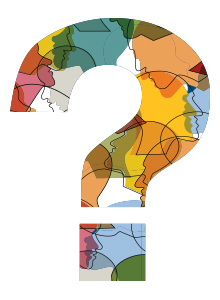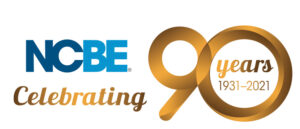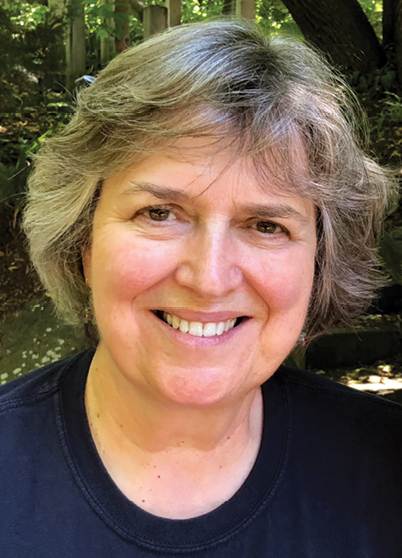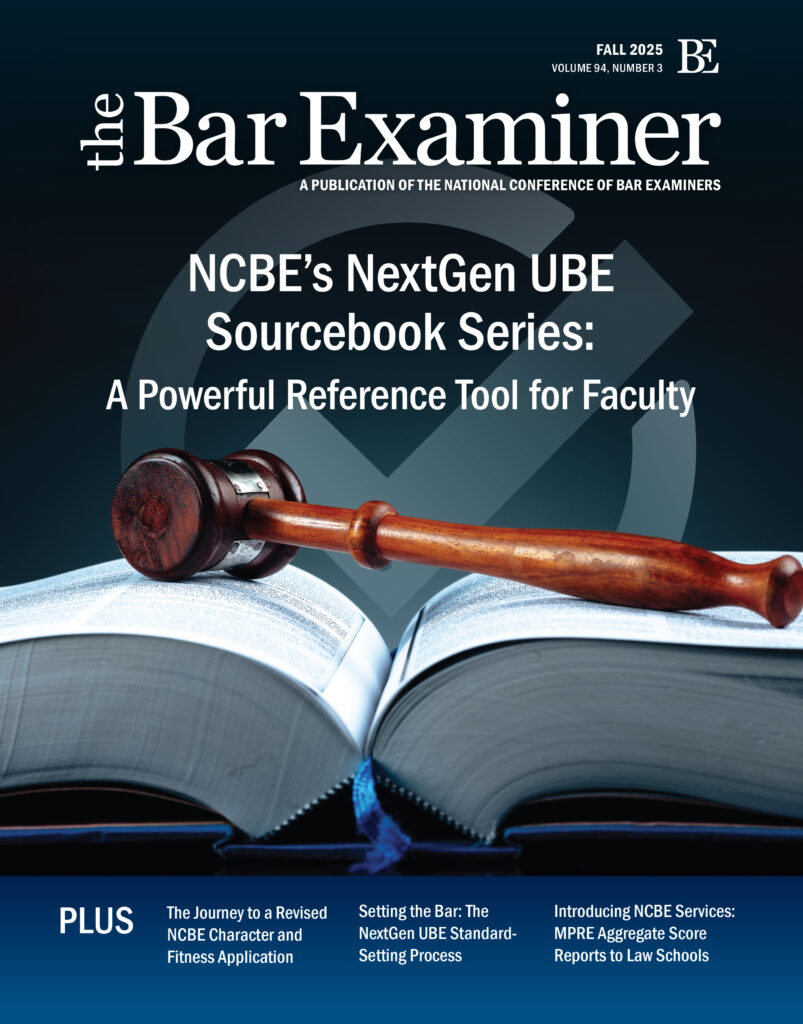 Interviews exploring seven questions to elicit people’s unique perspectives on bar admissions.
Interviews exploring seven questions to elicit people’s unique perspectives on bar admissions. 
This article originally appeared in The Bar Examiner print edition, Winter 2021-2022 (Vol. 90, No. 4), pp. 7–10.

In this issue’s “Seven Questions” column, we bring you an interview with Erica Moeser, who served as NCBE president for almost 23 years, from 1994 until her retirement in August 2017.
The interview was conducted on December 2, 2021, by Peg Corneille, former director of the Minnesota Board of Law Examiners and chair of NCBE’s Communications and Outreach Committee; Suzanne K. Richards, chair of NCBE’s Board of Trustees; Suzanne Schmitz, vice president of the Illinois Board of Admissions to the Bar and member of NCBE’s Communications and Outreach Committee; and Claire Guback, NCBE Editorial Director and editor of the Bar Examiner.
We asked Erica Moeser about her long history in bar admissions, her tenure as NCBE president, and her views on the challenges ahead.
1. How did you become involved in bar admissions, and how did this lead to your lengthy career in the field?
I was working for the State Bar of Wisconsin in 1977 as the director of its Board of Continuing Legal Education (CLE) when the Wisconsin Supreme Court, as part of a reorganization of lawyer discipline and bar admissions, moved CLE out of the state bar and made the board a Supreme Court agency effective in 1978. That’s where it all started, and I stayed involved in bar admissions ever since.
A lot of people were good to me along the way, which was true throughout my career. I became involved with the bar admission administrators almost immediately, through what was then called the Committee (now Council) of Bar Admission Administrators (CBAA), which gave me the opportunity to learn about how other bar admission administrators were doing things.
I think one of the real strengths of the CBAA then—and, I suspect, to this day—is that it provided a way to cross-pollinate information. A lot of people don’t realize that lawyer regulation is pretty isolated. It is unlike other professions where licensing is housed in an executive branch agency, as with, for instance, doctors and dentists and cosmetologists. Because law stands alone in the judicial branch, the only way to really learn about how other agencies do things is to meet people from other jurisdictions who are working in the field. We always said we would steal without shame, and indeed that was the case. It was very valuable.
Through my participation in the CBAA, I became involved with NCBE by being appointed to an NCBE committee. From then on, I did a lot of committee service with the Conference. Ultimately the Conference was looking for a new leader when Frank Morrissey, then-president and CEO, was in the process of leaving; a couple of people reached out to me, and I was chosen for the job.
When I was hired in 1994, NCBE was a very modest operation, largely driven by the volunteer board. There were only three professional employees, only two of whom were lawyers, handling character and fitness reports, working with an outside test contractor, managing the Bar Examiner publication, and organizing meetings—including what had been its biennial seminar for bar examiners (now the Annual Bar Admissions Conference). When you look at the evolution of the organization over time and fast-forward to what it is today, with professionals involved in so many aspects of the enterprise, especially the psychometric measurement staff now on board, it’s like night and day.
2. You were involved with the ABA and many other law-related organizations. Which law-related organization do you think had a significant impact on NCBE’s activities during your tenure?
There is no one organization; they all played a role at different times. Let me give you an example. At a point where we were on the precipice of leaving the test contractor that had delivered the Multistate Professional Responsibility Examination, the Law School Admission Council (LSAC) gave us a home to run the administration of that exam on very short notice. And that’s attributable to the late Dan Bernstine, then-president of LSAC, who was a real friend of the Conference and had been a member of the Multistate Bar Examination (MBE) Torts Drafting Committee and a frequent speaker at our conferences.
In terms of giving us national visibility, the Conference of Chief Justices (CCJ), which is part of the National Center for State Courts, was really critical. And it wasn’t just the organization, but a vice president, Rob Baldwin, who was key.
And finally, I don’t see how I could omit the ABA Section of Legal Education and Admissions to the Bar, and particularly the encouragement of Jim White, who for many years was its Consultant on Legal Education. Jim was very involved in pulling bar admissions people into committee work and into service on the Section’s governing body, and in giving us the visibility and credibility the Conference needed in order to establish a national profile and a trustworthy reputation.
It’s important for me to express that it was not simply the organizations; it was the kindness and generosity and perceptiveness of the people I mentioned—Dan Bernstine, Rob Baldwin, and Jim White. NCBE became part of a larger network and became accepted as part of that network, with relationships that may continue to this day.
3. A significant part of bar admissions is working with the various stakeholder groups—administrators, boards of bar examiners, Supreme Court justices, and law schools, among others. Which of these do you think most influenced NCBE and were most influenced by NCBE during your term and why?
Influence flowed both ways. As I mentioned, we ended up, as an organization, being the beneficiaries of kindness. Through Jim White, I became involved in law school accreditation and became a member (and later chairperson) of the Council of the Section of Legal Education and Admissions to the Bar, so it’s really less what I did than that I was standing in the right place at the right time when he spotted me. That visibility had begun earlier, when Jim was instrumental in having me appointed to the Section’s Bar Admissions Committee. There I met justices and deans and law faculty members and others who then opened doors that ultimately benefited the Conference.
Jerry VandeWalle, who has really been a giant in his own field as Chief Justice of the North Dakota Supreme Court, was also instrumental in introducing me to the CCJ. We were fortunate as an organization that we could parlay that exposure into things that directly benefited bar admissions; it raised visibility, established credibility, and gave the Conference a voice and an educational role at a time when there were issues involving lawyer regulation coming before the courts.
A national profile gave rise to the success that we had as an organization in expanding our seminars so that they became large and successful annual conferences. As an example, the justices’ roundtable at our annual conferences acknowledged justices as key players in bar admissions.
When I became engaged with the ABA Section of Legal Education and Admissions to the Bar, I met a lot of legal educators, including people of the caliber of Dean Mary Kay Kane and Dean Norman Redlich, who again were extremely kind and supportive of what the bar admissions community had to bring to the table. In terms of my interaction with many deans, the fact that we were in a position to have debates and conversations about issues in bar admissions only occurred because the Conference had access to the forum, and having access to the forum is very important.
4. Looking back over your years with the Conference, what do you recall as being the single most notable change in the field of bar admissions during your tenure?
Probably the professionalization of the bar admission agencies around the country. The need for sophistication in order to survive and deliver the services was essential. A striking example was the challenge presented by the Americans with Disabilities Act, which was passed in 1990 and presented the need for change in terms of test administration. Growing complexity in many aspects drove the need to professionalize.
5. Again, looking back, what do you recall as the most significant accomplishment that you helped NCBE achieve?
If I had a talent, it was for spotting talent in others. When we moved the NCBE office from Chicago to Madison in 2000, only two employees moved from Chicago. It was necessary to rebuild the organization and create a culture that was helpful to users, applicants, boards, and outside organizations. Many of these staff members are still with the Conference—people who shared an interest in doing things well and who understood the importance of excellent service.
And I think my recruiting talent extended to the drafting committees. Those individuals are extraordinary in their knowledge and dedication. The caliber of the people serving on those committees made excellent test products possible.
6. What was your greatest challenge during your term as NCBE president?
I think it is always a challenge to maintain quality, particularly in the face of expanding services, the need to evolve, and ever-changing technology. What made NCBE testing good was attributable to the quality of the work of our psychometric experts—with people like Susan Case and Michael Kane on the staff—and their knowledge, vision, excellence, and integrity. Maintaining that high quality will be a perpetual challenge.
One of the ironies of the day is the opposition to our exams. It was not that long ago that deans and others applauded our achievements in upgrading the quality of the bar exams then being administered by the states, which we did by creating high-quality national tests with quality materials to assist graders, and adding a performance test.
The irony is that some, who are new to bar admissions or who have short memories, are wary of the very examinations that were designed to supplant older examinations that were considerably less fair, valid, and reliable.
7. Looking ahead to the next 10 years in bar admissions, what do you see as the most significant challenges to be faced?
There will continue to be stakeholders in other aspects of legal education and admissions who are going to challenge the idea of a bar exam, and I would hope that there is a strong resolve to keep an exam in the face of that criticism. We have different interests. Law schools have an interest in seeing their students graduate and become licensed, and they are never going to like a qualifying exam that means some of their graduates do not become licensed immediately. Bar admission agencies seek a consistent application of standards across all legal educational institutions for applicants seeking to enter the legal profession.
One cannot have participated in accreditation processes across the country (as I did over decades, for a very broad spectrum of law schools) without understanding that, particularly in a tuition-driven environment—which many law schools face—there will always be a performance pressure on the dean and faculty that will compel criticism of the licensing exam. Courts and bar admission agencies need to hold the line on admission standards or yield to having law become an unregulated profession.
Ultimately, a critical reason for regulation of any profession is the protection of the people who are relying on that profession for services. Without such regulation, the legal profession, and particularly the courts, cannot assure the public that every new lawyer met minimal standards of quality regardless of the law school attended or the curriculum offered.
Setting a baseline in determining competence is something NCBE and other members of the bar admissions community should stand for, and I hope that they will continue to do so.
Final Thoughts: As NCBE celebrates its 90th anniversary, do you have some additional thoughts or memories that you’d like to share about your involvement with NCBE over the years?
There have been real heroes in terms of giving to the organization—a great many of whom are what we would call lions in the bar, who gave up hours and hours of billing time, and who were pillars of their bars in their jurisdictions. I think back on where the Conference would be without John Germany from Florida, the father of the MBE, as an example. Or where the Conference would be without the service of Jerry Hafter from Mississippi, who was one of the true visionaries—insufficiently sung, in my view. My list of lions is too long to list here. I hope they know who they are.
There have been other types of lions, too. Consider the contributions of a scholar, Margo Melli of the University of Wisconsin Law School, who was instrumental in getting the Multistate Essay Examination off the ground and an early champion of the then-radical idea of a uniform bar examination. As the first woman ever to serve on the NCBE Board, she was a visionary—and a lion—in her own right.
Finally, the extraordinary credentials of the individuals who crafted the tests that the Conference developed are the reason that the tests were of such superior quality. The work they undertook was a labor of love and an exceptional service to the profession and to those who would enter it. They, too, were lions.
Contact us to request a pdf file of the original article as it appeared in the print edition.







